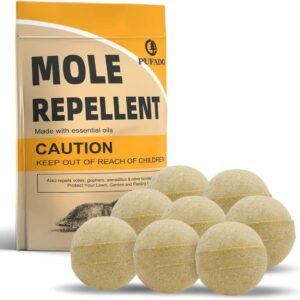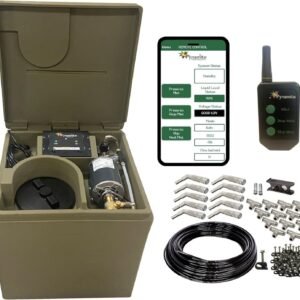Are you tired of dealing with carpet beetles in your home? These pesky insects can cause damage to your carpets, furniture, and clothing. But fear not, there are ways to keep them away! From regularly vacuuming and steam cleaning your carpets to storing clothing in sealed containers, there are simple and effective methods to prevent carpet beetles from infesting your home. Additionally, using natural repellents such as cedar oil or placing sticky traps can help deter these unwelcome guests. By following these tips, you can keep your home beetle-free and enjoy peace of mind. Say goodbye to those carpet beetle woes!
Identifying carpet beetles
Carpet beetles are common household pests that can cause damage to carpets, furniture, and clothing. Identifying these pests is the first step in preventing and controlling an infestation.
Different types of carpet beetles
There are several species of carpet beetles, but the two most common types are the varied carpet beetle and the black carpet beetle. Varied carpet beetles are small, round beetles with colorful scales on their bodies, while black carpet beetles are larger and have a shiny black appearance. Knowing the differences between these species can help in identifying the type of carpet beetle infestation you may have.
Signs of a carpet beetle infestation
There are several signs that indicate a carpet beetle infestation in your home. One of the most common signs is the presence of adult beetles crawling on floors, furniture, or walls. Another sign is the presence of shed skin or excrement in areas where the beetles have been active. Additionally, carpet beetle larvae can cause damage to carpets, furniture, and clothing, leaving behind irregularly shaped holes or damage to fabric. If you notice any of these signs, it is important to take action to prevent further infestation.
Understanding carpet beetles behavior
Carpet beetles have a lifecycle that consists of four stages: egg, larva, pupa, and adult. Understanding their behavior and lifecycle can help in effectively controlling and preventing infestations.
Lifecycle of carpet beetles
Carpet beetles go through a complete metamorphosis, starting as eggs and progressing to larvae, pupae, and finally adults. The eggs are tiny and can be difficult to spot, but they are usually laid near potential food sources, such as carpets, furniture, or clothing. The larvae are the destructive stage of carpet beetles and feed on natural fibers, such as wool, silk, or feathers. They can cause significant damage if left unchecked. After the larvae have fed and grown, they enter the pupal stage where they undergo a transformation into adult beetles. Understanding this lifecycle can help in targeting and eliminating the different stages of infestation.
Why carpet beetles are attracted to certain environments
Carpet beetles are attracted to environments that provide them with a source of food and shelter. They are particularly drawn to natural fibers, such as wool or silk, which are commonly found in carpets, upholstery, and clothing. Additionally, carpet beetles are attracted to warm and humid environments, making them more common in certain regions or during certain seasons. Proper understanding of their preferences can help in implementing preventative measures to keep them away.
Preventing carpet beetles infestation
Prevention is key when it comes to controlling carpet beetle infestations. Here are some effective ways to prevent these pests from taking up residence in your home.
Maintaining cleanliness and hygiene
Keeping a clean and hygienic living environment is essential in preventing carpet beetles. Regularly dusting, vacuuming, and sweeping will help remove any potential food sources, such as pet hair or dead insects, that carpet beetles feed on. It’s important to pay extra attention to areas where carpets, upholstery, and clothing are present.
Regular vacuuming and deep cleaning
Vacuuming your home on a regular basis is crucial in preventing carpet beetle infestations. Pay special attention to areas with carpeting, upholstery, and rugs. Additionally, deep cleaning carpets and furniture periodically can help remove any potential eggs or larvae that may have been missed during regular cleaning. Consider using steam cleaning methods, as the high temperatures will kill any pests that may be hiding.
Proper storage of clothing and textiles
Properly storing clothing and textiles can help prevent carpet beetles from infesting your wardrobe. Use airtight containers or vacuum-seal bags to store clothing that is not in use for an extended period. Additionally, regularly inspect stored items for any signs of infestation and wash or dry clean them before putting them back into storage.
Natural ways to repel carpet beetles
If you prefer to use natural methods to repel carpet beetles, there are several options available.
Using essential oils
Certain essential oils, such as lavender, peppermint, or cedarwood, are known to repel carpet beetles. You can create a natural spray by diluting a few drops of your chosen essential oil with water and spraying it on areas where carpet beetles are likely to be found. Refresh the spray regularly to maintain its effectiveness.
Using cedar chips or blocks
Cedar chips or blocks can also be used as a natural repellent for carpet beetles. The strong odor of cedar is unpleasant to these pests, and they will avoid areas where it is present. Place cedar chips or blocks in closets, drawers, or other areas where clothing or textiles are stored.
Diatomaceous earth as a natural repellent
Diatomaceous earth, a natural powder made from fossilized algae, can be used as a non-toxic repellent for carpet beetles. Sprinkle it in areas where the pests are likely to be found, such as along baseboards or under furniture. The powder will dehydrate and kill the beetles, effectively controlling the infestation.
Chemical control methods
If natural methods are not effective in controlling a carpet beetle infestation, chemical control methods may be necessary.
Using insecticide sprays or powders
Insecticide sprays or powders specifically designed to target carpet beetles can be used to eliminate infestations. These products should be applied according to the instructions provided, focusing on areas where carpet beetles are likely to be present, such as carpets, furniture, or clothing. It is important to follow all safety precautions and keep children and pets away from treated areas.
Consulting with pest control professionals
If the infestation persists or is severe, it may be necessary to seek professional assistance from pest control experts. They have the experience and knowledge to effectively identify and eliminate carpet beetle infestations. Professional treatment may involve the use of stronger insecticides or heat treatments to completely eradicate the pests.
Getting rid of carpet beetles in specific areas
Carpet beetles can infest specific areas in your home, such as cars or furniture. Here are some tips on how to deal with carpet beetles in these specific areas.
Treating carpet beetles in cars
To prevent carpet beetles from infesting your car, regularly clean and vacuum the interior, paying special attention to carpets and upholstery. If you notice signs of infestation, use a vacuum with a brush attachment to remove any visible carpet beetle larvae or eggs. Additionally, consider using natural repellents, such as cedar chips or essential oil sprays, to deter carpet beetles from entering your car.
Dealing with carpet beetles in furniture
If you discover carpet beetles in your furniture, there are several steps you can take to eliminate the infestation. Start by thoroughly vacuuming the affected furniture, paying close attention to seams, tufts, and crevices where carpet beetles may be hiding. If possible, remove any fabric covers and wash or dry clean them to kill any remaining beetles or eggs. Consider using insecticide sprays or powders specifically designed for use on furniture to treat infested areas.
Preventing carpet beetles in bed
To prevent carpet beetles from infesting your bed and bedding, follow these tips.
Choosing the right bedding materials
Carpet beetles are attracted to natural fibers, so choosing bedding materials made from synthetic fibers, such as polyester or nylon, can help deter them. Avoid using wool, silk, or feather-filled bedding, as these materials are more likely to attract carpet beetles.
Regularly washing and changing bedding
Regularly washing and changing your bedding is essential in preventing carpet beetles. Wash your bedding in hot water and dry on high heat to kill any potential pests. Additionally, consider rotating your bedding to ensure that all areas are exposed to regular cleaning.
Using mattress encasements
Using mattress encasements can help prevent carpet beetles from infesting your bed. These encasements create a barrier that prevents pests from accessing your mattress, effectively protecting it from infestation. Choose encasements that are specifically designed to be bed bug-proof, as they will also prevent carpet beetles from entering.
Effective carpet beetle traps
If you are dealing with a persistent carpet beetle infestation, using traps can be an effective method of control.
How sticky traps can help in controlling carpet beetles
Sticky traps are a commonly used method for controlling carpet beetles. These traps are coated with a sticky substance that attracts and traps the beetles. Place the traps in areas where carpet beetles are likely to be found, such as near windows, entryways, or infested areas. Monitor the traps regularly and replace them when they become full or lose their stickiness.
Dealing with carpet beetle larvae
Carpet beetle larvae are the destructive stage of these pests and can cause significant damage to carpets, furniture, and clothing. Here are some ways to identify and target these larvae.
Identifying and targeting larvae
Carpet beetle larvae are small, elongated insects with bristly hairs on their bodies. They are typically brown or black in color and can be difficult to spot due to their size and ability to blend in with their surroundings. If you suspect the presence of carpet beetle larvae, carefully inspect areas where damage has occurred, such as carpets, upholstery, or clothing. Use a vacuum with a brush attachment to remove any visible larvae, eggs, or debris.
Applying insect growth regulators
Insect growth regulators (IGRs) are a chemical control method that can be effective in targeting carpet beetle larvae. These substances disrupt the normal development of the larvae, preventing them from reaching adulthood and reproducing. IGRs can be applied in spray or powder form to infested areas, focusing on areas where larvae are likely to be present. Follow the instructions provided with the product and ensure that all safety precautions are followed.
Professional extermination of carpet beetles
In some cases, a carpet beetle infestation may require professional assistance to fully eliminate. Here are some factors to consider when deciding whether to seek professional help.
When to seek professional assistance
If your carpet beetle infestation persists despite your best efforts, or if the infestation is severe, it may be time to seek professional assistance. Pest control professionals have the expertise and tools necessary to effectively eliminate carpet beetle infestations and prevent future outbreaks. They can conduct a thorough inspection of your home, identify problem areas, and develop a comprehensive treatment plan.
Costs and benefits of professional carpet beetle extermination
The cost of professional carpet beetle extermination will vary depending on the size of the infestation and the extent of the treatment required. However, the benefits of professional extermination can outweigh the cost. Professional treatment is often more effective in eliminating the infestation and preventing future outbreaks, saving you time, money, and the frustration of dealing with persistent pests. Additionally, professional extermination can provide peace of mind knowing that the problem has been properly addressed.
In conclusion, identifying and understanding carpet beetles is crucial in effectively preventing and controlling infestations. By implementing preventative measures, utilizing natural repellents, and employing both chemical and non-chemical control methods, you can successfully eliminate carpet beetles and protect your home from future infestations. If all else fails, don’t hesitate to seek professional assistance to ensure the complete eradication of these pests. Remember, early detection and intervention are key in combating carpet beetles and saving your carpets, furniture, and clothing from damage.








